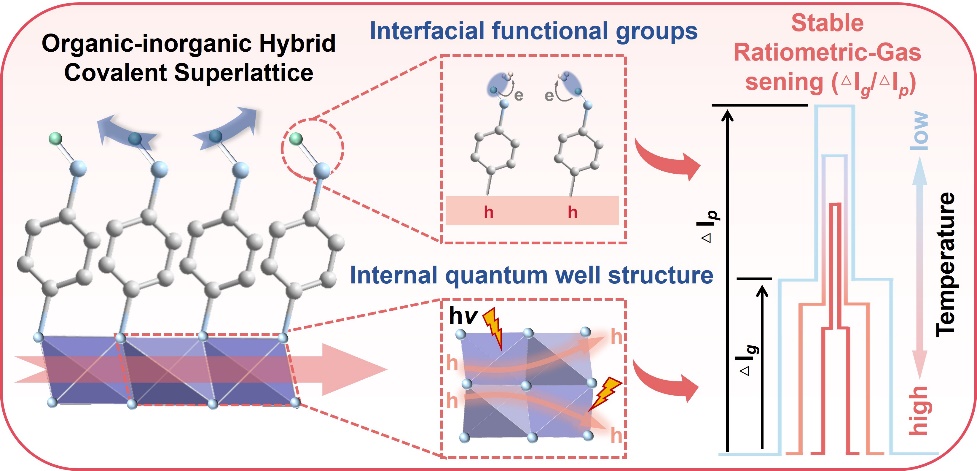The semiconductor nature of chemiresistive gas sensors renders their detection accuracy highly vulnerable to operational temperature fluctuations, where even minor thermal fluctuations trigger baseline resistance drift, leading to unreliable readings. Researchers have sought a material-level breakthrough—integrating gas sensitivity and temperature stability into a single platform—to overcome this critical limitation.
In a study published in Nature Communications, the research group led by Prof. XU Gang and Prof. WANG Guane from Fujian Institute of Research on the Structure of Matter, Chinese Academy of Sciences, designed and synthesised a novel organic-inorganic hybrid covalent superlattice material, AgBDT (BDT = 1,4-benzenedithiol) and proposed a ratiometric sensing mechanism to combat temperature drift. This material achieves ultra-sensitive NO₂ detection at room temperature (limit of detection: 0.22 ppb) while reducing temperature-induced coefficient of variation (CV) from 21.81% to 7.81%, providing a new solution for high-precision gas sensing.
The distinctive structure of AgBDT integrates a two-dimensional inorganic [AgS]ₙ layer with organic benzene rings, forming a multi-quantum well superlattice that synergistically enhances photoelectric and gas-sensing functionalities. This design significantly amplifies the photoelectric response,achieving a record on/off ratio of 1770 among conductive coordination polymers. Concurrently, the surface-anchored sulfhydryl groups furnish abundant NO₂ adsorption sites through Lewis acid-base interactions and hydrogen-bonding,facilitating strong electron transfer (0.27 e⁻ per NO₂ molecule) as confirmed by density functional theory (DFT) calculations, which explains the high sensitivity with a response value of 15000% towards 100 ppm NO2.
These calculations further elucidated the p-type semiconductor characteristics of AgBDT, demonstrating how dynamic modulation of photoinduced hole concentration governs its photoelectric response, thereby establishing an electronic structure-level theoretical framework for its exceptional performance.
The researchers innovatively introduced a ratiometric-gas sensing detection strategy, using the photoelectric response (Rph) as an internal reference to gas-sensitive signals (Rgas). By calculating the ratio Rgas/Rph, they effectively eliminated the influence of temperature-induced baseline drift. Experimental results confirmed the exceptional stability of NO₂ detection across a broad temperature range of 25–65°C, slashing temperature-induced variability by 64% (CV: 7.81% vs. 21.81%).
This study pioneers the integration of ratiometric sensing with organic-inorganic hybrid superlattices, resolving the persistent challenge of temperature drift and opening avenues for “self-correcting” sensors.

Superlattice materials for ratiometric-gas sensing detection (Image by Prof. XU Gang’s group)
Contact:
Prof. WANG Guane
Fujian Institute of Research on the Structure of Matter
Chinese Academy of Sciences
Email: gewang@fjirsm.ac.cn